Chard Farm, New Zealand
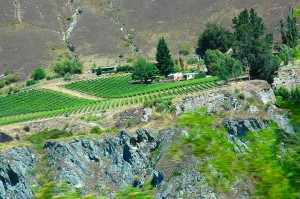
Photo courtesy: Ron Laughlin
New Zealand Travel Guide
www.newzealandtravelguide.net

Created by June Morrall
Chard Farm, New Zealand

Photo courtesy: Ron Laughlin
New Zealand Travel Guide
www.newzealandtravelguide.net
Hi June,
Thanks for helping us reconnect with Peter Turner our New Zealand friend. If you have a link to pass on I will get in touch.
Hope you’re doing well .Best regards – Paul
Solar Universe
1820 N. Cabrillo Hwy
Half Moon Bay CA 94019
—————
In a follow-up email, I learned that Paul is married to Janie Bono. Here’s what Paul said:
You may know my wife. Janie Bono. She is the director of the Coastside Adult Day Health Center. She has so much empathy for people and is very kind by nature. I have learned by listening to her about grief and loss although I have been spared from deep grief in my own personal life. All the best and I look forward to saying hello again sometime soon.
Paul James
———————–
GREETINGS to paul james from peter adams!
Email Peter Adams ([email protected])
Hi June,
Story by John Schmale
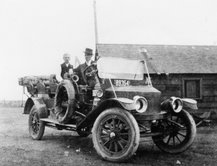 [Image: During its first year of service: Ocean Shore Railroad-owned Stanley Steamer “Number One” awaits a southbound passenger train at the northern division railhead at Tunitas Creek. At Tunitas, passengers boarded the sporty steam car for a thrilling 26- mile run through the railless “Gap” to the Ocean Shore Railroad’s southern division railhead at Swanton. The 26- mile trip took five hours, with six scheduled stops. (Bob Gray photo: courtesy Rick Hamman.]
[Image: During its first year of service: Ocean Shore Railroad-owned Stanley Steamer “Number One” awaits a southbound passenger train at the northern division railhead at Tunitas Creek. At Tunitas, passengers boarded the sporty steam car for a thrilling 26- mile run through the railless “Gap” to the Ocean Shore Railroad’s southern division railhead at Swanton. The 26- mile trip took five hours, with six scheduled stops. (Bob Gray photo: courtesy Rick Hamman.]
Stanley Steamers of the Ocean Shore Railroad
By John Schmale
After 1900, electric railroad schemes surfaced in every part of California-some well conceived, some, ill conceived. Some were very successful-most were not. One sad story was that of the, ill fated, Ocean Shore Railway. Its backers were all very well known and wealthy San Franciscans.
The plan was to run a double track electric railroad, from San Francisco, along the Pacific Ocean, some 83 miles, to the seaside town of Santa Cruz-a town known for beautiful beaches and its redwood timber industry. The ultra-powerful Southern Pacific Railroad already served the town. Ocean Shore backers were certain that a fast electric line, offering beautiful ocean scenery and reduced running time could siphon off tourist and freight business from the SP.
Incorporated on May 18, 1905, the Ocean Shore Railway began construction at several key points along the line including Devils Slide and Mussel Rock bluffs. Much of the construction equipment and manpower was focused on blasting roadbed from near-vertical cliffs. In one place, a single charge containing 450 tons of black powder was exploded, tossing an entire mountaintop into the Pacific Ocean. For the next several months construction went as planned. The future couldn’t have looked brighter.
Early morning on April 18, 1906, the famous disaster that befell San Francisco did not spare the Ocean Shore Railway. At Mussel Rock Bluffs, earthquake shockwaves sent Ocean Shore’s steam shovel, and other equipment, crashing from a high cliff to the beach below. Several miles of twisted, broken, and sagging track would have to be rebuilt. Equipment in San Francisco suffered as well, but the most severe damage was done to bank accounts of the line’s directors. Their investments focused on San Francisco businesses and real estate. The financial panic that followed the earthquake and fire meant that plans to double-track the system would be shelved, and so would electrification. The exception was an electric-only portion of tracks in San Francisco required by city franchise. Steam locomotives ran over the rest of the line.
Construction resumed at a slow pace. By 1909, the northern-division had advanced southward, to Tunitas Creek, while construction on the south end pushed northward from Santa Cruz to Swanton, leaving a gap of 26 miles. A horse drawn stage line bridged this gap.
With state-funded road improvements beginning in 1913, the partially completed railroad had now to compete with private trucks, autos, and jitneys, that cut into the railroad’s traffic of sand, rock, vegetables, artichokes, picnic-trains, and a limited San Francisco commute business. All construction halted.
In an effort to offer swift through service from San Francisco to Santa Cruz, Ocean Shore Railroad’s, offshoot-corporation, the Ocean Shore Auto Stage Company, in March 1914, purchased a shinny, new, Stanley Steamer bus. It was a twelve-passenger, thirty-horsepower, Mountain Wagon. 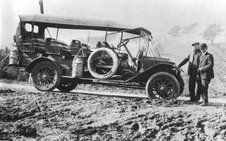 [Image: Stanley Steamer “Number Two,” a 12-passenger Mountain Wagon with the top up, posed near a creek between Ocean Shore Railroad railheads. Milk cans tied to the running boards of the bus may have been full of trout for planting in local streams. Another explanation is the cans are simply full of water to feed the Stanley’s thirsty boiler. (Rudy Brandt Collection)
[Image: Stanley Steamer “Number Two,” a 12-passenger Mountain Wagon with the top up, posed near a creek between Ocean Shore Railroad railheads. Milk cans tied to the running boards of the bus may have been full of trout for planting in local streams. Another explanation is the cans are simply full of water to feed the Stanley’s thirsty boiler. (Rudy Brandt Collection)
The bus was placed in service on April 1, 1914. Two trains per day connected with the new auto stage line at Tunitas. Through-passengers boarded the southbound Stanley Steamer for the towns of San Gregorio, Pescadero, Pigeon Point, Gazos, and Waddell, connecting in Swanton with the southern-division trains to Santa Cruz. Northbound passengers boarded the buses in Swanton for the reverse trip.
Due to the popularity of the auto service, a second Stanley Mountain Wagon was delivered on June 10, 1914. 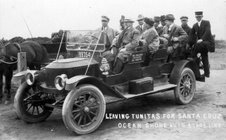 [Image: The popular Stanley Steamer headed for Swanton where passengers going to Santa Cruz boarded the Southbound Ocean Shore train. For the traveling public the steamers were a welcome relief from the stagecoaches they replaced. Bob Gray and Harry Staples ran the “Ocean Shore Auto Stage Company.” (John Schmale Collection.]
[Image: The popular Stanley Steamer headed for Swanton where passengers going to Santa Cruz boarded the Southbound Ocean Shore train. For the traveling public the steamers were a welcome relief from the stagecoaches they replaced. Bob Gray and Harry Staples ran the “Ocean Shore Auto Stage Company.” (John Schmale Collection.]
This proved to be a timely purchase, for the following two winters were wet, disastrous, and costly for the, already impoverished railroad. Heavy rains caused washouts and slides along miles of the cliff-hugging roadbed. The entire northern division was closed from January 15, 1915, through March 2, 1915. The two Stanley Steamers saved the day by ferrying passengers, mail, and express packages from Swanton and Tunitas over thirty-five miles of torturous, muddy, mountain roads to San Francisco. Their franchise allowed the steamers to run only between Ocean Shore railroad’s terminal at Tunitas and its Southern division terminal at Swanton. However, during this emergency operation the rules were overlooked.
This scenario was repeated the following year when the Railroad was again shut down. During the severe rainy winter of 1916 the steamers ran at full tilt, until one blew a boiler. The company had a new boiler expressed from Denver and the vehicle was down for less than a week. The stage company missed only one day of mail delivery.
The two Stanley Steamers continued to provide reliable daily service to Ocean Shore Railroad patrons until the permanent closure of the railroad on August 17, 1920.
Because the rail service ended suddenly, the steamers were again allowed to carry mail, passengers and light freight from stranded coast side communities into San Francisco. Former Ocean Shore Railroad employees, Jim Gray, and Harry Staples, who had operated the buses for the railroad, continued the same service on an emergency basis. On January 14, 1921, the California State Railroad Commission granted them a permanent license. It is not known when the bus service ended or what became of the two Stanley Steamers. Research is ongoing.
==========
Railroad historians John and Kristina Schmale’s new book is called The Petaluma and Santa Rosa Railway, published by Arcadia. The authors will be signing books at Copperfield’s Bookstore in Petaluma. For more info, please call 707-762-0563 or email Grace Bogart: [email protected]
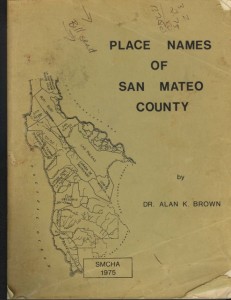
Hello,
I was looking at your web site and came across an article written about a Paul James.
I and my wife and daughters met a Paul and Lindy James whilst we were holidaying in Fiji in 1981. Paul and Lindy were on their honeymoon.
We consequently invited them to our home in New Zealand and struck up a friendship such that we stayed with them at Moss Beach near Halfmoon Bay a couple or so years later. We had a wonderful time and I remember going to a small café called Joanne’s Pantry where we were introduced to Eggs Benedict for the first time also visiting a small shop ‘Twice as Nice for Half the Price’. We also went to a Rodeo for the first time. Then unfortunately over the years we lost touch with them.
The coincidence with your article is that Paul was a boat builder by profession and had an oyster boat out in the Bay which he was restoring. He also showed us an ornate timber house he had built in a Victorian style which seems to match with your article. His wife Lindy was very keen on horses and I think she eventually had a small ranch just outside Halfmoon Bay somewhere around Pacifica.
Pauls Mother and Father lived in Pacifica.
I don’t want to put you to any trouble but as we are contemplating coming to San Francisco in the near future we would dearly like to meet up with Paul and Lindy again and if I am correct in my assumptions can you put us in touch with them.
Kind Regards
Peter
Peter Turner (L.C.I.B.S.E.)
19 Severn Street
Mosgiel
Dunedin 9024
New Zealand
Phone 64 3 4892047
Cell: 0274892047
Email: [email protected]
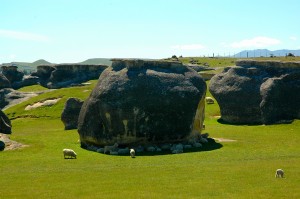
[Image: Duntroom, New Zealand, courtesy Ron Laughlin]
Hello June, My name is Grace Bogart, and I handle events at Copperfield’s Books in Petaluma. I found your website because I was Looking for John Schmale. He has a new book coming out with Arcadia Prees about the Petaluma and Santa Rosa Railroads 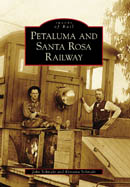 and I was thinking that he might like to come into our store for an author signing. These historic Petaluma books are very popular with our clientele; we have hosted Katherine Rinehart numerous times- she also has a book on Petaluma with Arcadia- as well as many other authors of books with a local flavor. Your website is the only contact I could find for John, and it looks like you are in touch with him. Could I prevail upon you to forward this email on? Don’t do it if you feel it’s inappropriate, but I would really appreciate it if you can. Thank you so much! Grace O’Neil Bogart Copperfield’s Books – Petaluma, Ca. 707-762-0563 [email protected]
and I was thinking that he might like to come into our store for an author signing. These historic Petaluma books are very popular with our clientele; we have hosted Katherine Rinehart numerous times- she also has a book on Petaluma with Arcadia- as well as many other authors of books with a local flavor. Your website is the only contact I could find for John, and it looks like you are in touch with him. Could I prevail upon you to forward this email on? Don’t do it if you feel it’s inappropriate, but I would really appreciate it if you can. Thank you so much! Grace O’Neil Bogart Copperfield’s Books – Petaluma, Ca. 707-762-0563 [email protected]
———————————————————–
When railroad historian emailed halfmoonbaymemories.com, about the Ocean Shore RR, this is what he wrote; please click here !!!!!!!!!!!!!!!!!!!!!!!!!!!!!!!!!!!!!!!!!!!!!!!!!!!!!!!!!!!! Wow, Hi June,
June Morrall (JM) to Don Martinich (DM)
Thank you for the fascinating email! I had no idea there was so much cycling around here. I would love to know more. I did eat at Pete’s Cafe a couple of times before the building vanished….how I wish I had had the experiences you had. How did you get the photo?
DM: I grew up on the Peninsula. My parents, my sister and I moved to sunny San Carlos in 1944 from the foggy Sunset in SF. Eventually we ended up in Menlo Park. After graduating from Menlo Atherton HS and diddling a bit at CSM I spent 4 years in the Coast Guard. Around the time I got out I became highly interested in European bicycle racing and the bikes themselves.
DM: Living along the edge of the northern portion of the Santa Cruz Mountains, it was the obvious place to ride. The coast side of The Hill had a lot of lightly trafficked and scenic roads so it was also a natural place to ride. I ended up joining the local cycling club, Pedali Alpini, where I found many riding partners and a little organized competition. Back then our races weren’t sanctioned by local authorities so the coastal roads were ideal locations. We did time trials near San Greg[orio] and had a road race up and down the coast called the Tour Del Mar.
DM: The photo of Erich [ von Neff] is from a time trial we held in April of 1964. After the the time trial several of us repaired to Pete’s for a spaghetti lunch. That’s when I snapped the foto of Pete. By the way, I was so pleased to find Steve Lubin’s article on Pete’s on you site. Steve and I used to ride together quite a bit in the mid-60’s. I have family living on King’s Mountain so I decided to come down from Davis to watch the Tour of California come up Tunitas Canyon last Monday. Who should I run into after 40+ years, but, Steve! Erich came up in the conversation and it was Steve who suggested that I contact you. Actually, I would have probably done that any way. The photos that I took of the time trial are going to be part of a web page on vintage cycling I am working on. I will send you the url when I get it up.
(JM): And why are you called “Dutch?” There was a famous “Dutch” Alves in Half Moon Bay.
DM: The name “Dutch” was given to me by a friend in high school and it just stuck. I’m not Azorean like the Alves family but my father was born on an island along the Dalmatian coast. There are similarities between the two cultures.
JM: What’s your rumrunning connection? I would be honored, truly, if you tell me more.
DM: My father, who grew up in North Beach from 1912 on, had apprenticed as a machinist and became a journeyman in 1920, just in time for prohibition. He had a partnership in a saloon for a while and then some people he grew up with got into the import business. They bought several WW1 surplus boats and would buy imported liquor from Canada from off the ‘motherships’ that hovered out beyond the 12 -mile limit. They would pull into coves in dark of night and offload to small dories who would come in through the surf and unload on the beach. People with trucks would be waiting at the designated spots and drive the liquor back up to SF at night and hope to avoid the feds and highjackers.
DM: It all sounds a bit dangerous to me but these guys were all in their early 29’s. I remember my Dad mentioning Pedro Point, Moss Beach, and Martin’s Beach as landing sites. Imagine braving that surf in the winter!
JM: Erich von Neff is a special writer and I enjoy posting his work.
DM: I loved Erich’s race down the coast story. It had a real magical quality to it. I wish there were more.
—————–
Ms. Morrall
First. I’ve enjoyed your web site immensely and have dawdled away many hours there. I’ve particularly enjoyed the cycling articles of Steve Lubin and Erich von Neff, both contemporaries of mine, I spent many hours back in the 60’s cycling “over the hill” and often lunching at Pete’s Coffee Shop, or, was it Cafe? I ran into Steve Lubin this week while watching the bike race up Tunitas Canyon and he positively id’d this photo taken by me back in 1964 at a cycling time trial held near San Gregorio. I can assure you that Erich’s cycling credentials are impeccable. So, here’s the photo.
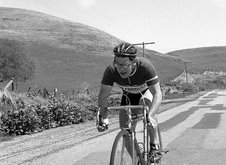
I have also attached a photo of Pete working in the kitchen of his establishment.
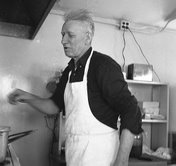
Very best wishes and keep up the good work!
Don “Dutch” Martinich